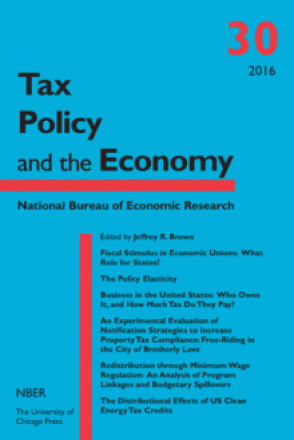The Policy Elasticity

You may be able to download this chapter for free via the Document Object Identifier.
This paper illustrates how one can use causal effects of a policy change to measure its welfare impact without decomposing them into income and substitution effects. Often, a single causal effect suffices: the impact on government revenue. Because these responses vary with the policy in question, I term them policy elasticities, to distinguish them from Hicksian and Marshallian elasticities. The model also formally justifies a simple benefit-cost ratio to measure the marginal value of public funds corresponding to non-budget neutral policies. Using existing causal estimates, I apply the framework to five policy changes: top income tax rate, EITC generosity, food stamps, job training, and housing vouchers.
-
-
Copy CitationNathaniel Hendren, Tax Policy and the Economy, Volume 30 (University of Chicago Press, 2014), chap. 2, https://www.nber.org/books-and-chapters/tax-policy-and-economy-volume-30/policy-elasticity.Download Citation


